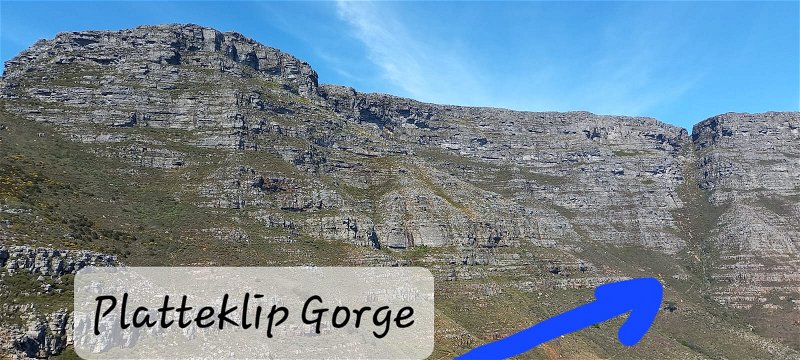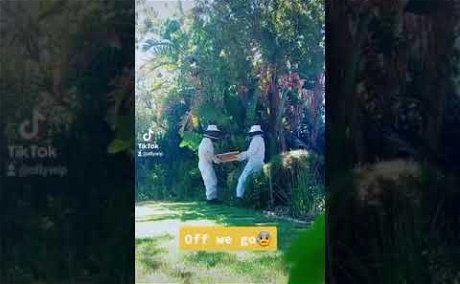A great idea for a day visit to Hermanus and return. Even outside the Whale season, it's still an interesting place, with awesome sceneries both ways.
Visit Table Mountain
Here is another article about day-tour visits whilst in Cape Town. You can combine this with the city bowl & the V&A.
Table Mountain is Cape Town's most emblematic natural wonder, and you must try to get on top during your stay.
Table Mountain has understandably become Cape Town's emblem. Without getting into the history, be it geological or geopolitical, just picture the face of the first sailors when this large mountain came in sight. With a bit of luck, it could have been one of those days with an extraordinary tablecloth effect: magical & mysterious. This happens when hot air coming from the Karoo (semi-desertic inland area, past the first chain of mountains) meets the cold air coming from the ocean. The cold air is fuelled by the Benguela current (strong currents dragging the ice-cold water from the bottom of the ocean to the surface, and together with-it tons of micronutrients which is the base of a rich food chain and the reason why we have such prosperous fishing resources all along our coasts). Enough of this lecturing now, let's get to essence of what you're here for: visiting the Cape!
There are many ways you can get on top of Table Mountain, but first of all this is the one particular day tour you can't plan in advance, and this is largely due to the weather being so unpredictable. The general rule of thumb when coming to Cape Town is not to plan anything in advance. Rather have a list in mind and go day by day. This applies to Table Mountain in particular. We usually recommend going as soon as there's an opening. We've had guests staying an entire week and not having had once an opportunity (fog, rain, cloth effect or gale force winds). Others, went right after check-in, even after their long-haul flight.
You can either take the cable car, or hike.
The first option is much easier but expect long queues both ways during the high season (Dec-Feb). Mind you, after having implemented ticket split between mornings and afternoons, to break the flow, they now offer a "fast track" option. Double the price for a fraction of the wait. Don't bother pushing and pulling for THE best position on board the cabin because it swerves, so that everyone gets a fair chance of getting a 360° view.
For the second option, you have various hikes, but the most direct is Platteklip Gorge (I don't know where the "platte" comes from, because it's anything but flat...). It's the only one I know of where you can see the finish from the start. It's safe, as mostly busy with all sorts of hikers (going from bare feet to wearing flip-flops, or even high heels...). If you start with a sturdy yet regular pace, you'll be up in 90 minutes. Don't forget to take a bottle of water, sun block and wear a cap since in summer it can get really hot.
Now that you're on top, you can choose to do the quick visit with a couple of pictures all round, and back down, or you can spend a tad more time and observe.
Of course, you're here for the awesome views, but there's more to it. You'll probably get to see some dassies (hyrax Hyrax). It looks like a small marmot, but this is where the comparison ends. It's apparently affiliated to the elephant family, with similar paws, and tusk-like long top canines.  They live in groups and are sedentary, which lead to a very interesting study on the composition & quality of air centuries ago. If you're interested, I'll explain this in more details once you're here. They are very accustomed to humans as they see so many per year, but also because many feed them by hand.
They live in groups and are sedentary, which lead to a very interesting study on the composition & quality of air centuries ago. If you're interested, I'll explain this in more details once you're here. They are very accustomed to humans as they see so many per year, but also because many feed them by hand.
On a clear day, you'll probably get a chance to spot a peregrine falcon gliding or in a stationary flight mode, busy hunting. There are a few couples up there.
Also interesting are the Drosera Cunifolia or ant eaters. Since the substrate on top of Table Mountain is rather poor, these small plants have evolved to be able to trap and digest small insects such as ants (hence the name). They are pale green even though they look dark pink or even red due to the colour of the many sticky tentacles covering them. It will take them hours to close onto the entrapped insect & days to digest it. No, it won't snap in a spilt second like other carnivore plants, so PLEASE refrain from touching them.

You'll find them around small puddles, usually on moss as they like moisture.
Now that you're back down, you can start with the city bowl visit (in our next article).
Further Reading
Amongst many other day-tours, this one is a MUST SEE on you bucket list!
If you ever wondered where our row honey comes from














Share This Post